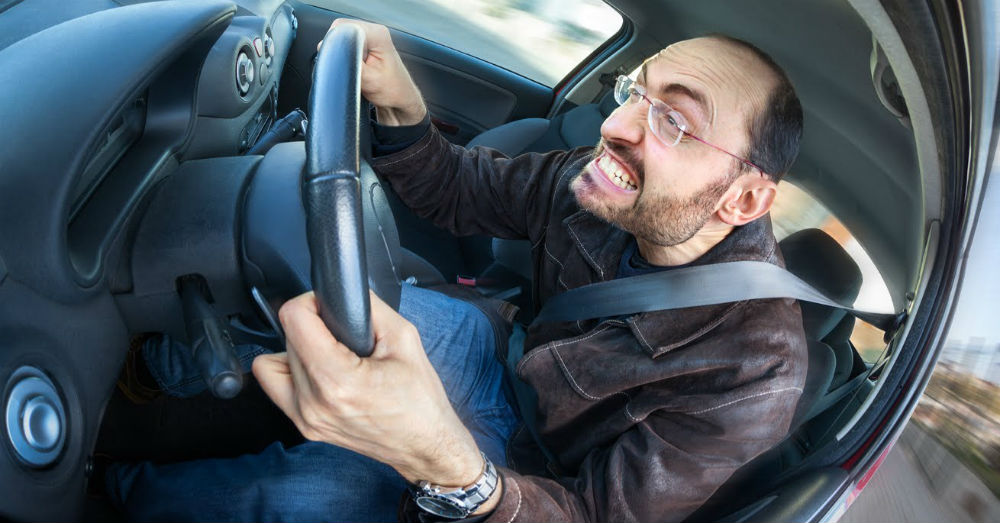Imagine yourself on the road. You’re chugging along, on your way to work or taking a trip to Grandma’s house to visit, and you notice you’re being tailgated to the extent that you can’t see the grill of the car behind you. At this point, most drivers will ease into the other lane and allow the offending car to pass. But what happens if they don’t? If you’ve been driving for any period of time, then you’ve encountered an aggressive driver or two in your time. These drivers are making driving difficult and unsafe for every other driver on the road, but what can be done to combat this?
Police in high-traffic areas are cracking down on aggressive driving, even going so far as to label specific roadways as Aggressive Driving Areas. These roads can be found all over the country, and they signify that the area is a high crash zone; accidents typically caused by aggressive drivers over asserting themselves. For the police, aggressive driving is an increasing issue, as more and more drivers have become a danger to themselves and others as they traverse the highways. This type of driver causes much more harm than good, but what constitutes an aggressive driver?
- Tailgating – If you’re one of those drivers that crawls up the tailpipe of the car in front of you, this is the first sign that you may be an aggressive driver. There is a recommended safe distance for a reason, and following too closely to the car in front of you can quickly turn into a very dramatic situation, should the car have to stop suddenly, whether out of necessity, or on purpose. Keep a distance of, at the very least, one car length between you and the car in front of you lest your tailgating gets the best of you.
- Lane Hopping – Haphazardly switching lanes to ease ahead of the other cars by a couple of inches definitely labels your driving habits as aggressive. People who jump back and forth from one lane to the other typically do so without looking or pay close enough attention when doing so. As a result, they often are the cause of side-swiping accidents or rear-end collisions. Jockeying for position when you’re moving at a snail’s pace is not only dangerous, but it’s truly an exercise in futility.
- Actively Seeking Confrontation – We’ve all had the urge to get out of our car and cuss someone out before, haven’t we? No? That’s only me? Well anyway, looking for confrontation on the road is a good sign that you have an issue with road rage and/or aggressive driving. This type of behavior leads to larger problems and probably accounts for the statistic that nearly 40% of aggressive driving incidents involve a handgun. Looking for trouble where there isn’t any or causing a problem over the smallest perceived slight is unnecessary behavior and should be avoided at all costs.
- Not Following Rules – Safe drivers use their turn signals, yield when they’re supposed to, and generally obey the rules of the road. Aggressive drivers do none of these things. They make the laws for themselves as getting where they need to go and causing mayhem on the roads is their number one concern. Generally, an aggressive driver has no concern for their fellow drivers, and this makes them incredibly dangerous to said drivers. If you’re one of these people, check your behavior, before it’s too late. If you’re impacted by one of these drivers on a regular basis, make sure you’re hyper aware of your surroundings.
- Illegal Passing – Of course, we’ve all been stuck behind a super slow driver on a back road, but how you handle this situation can easily determine if you’re an aggressive driver or not. If you simply proceed behind the driver and wait for an appropriate passing section, you’re obeying the laws and are, more than likely, a safe driver. However, if you’re constantly slipping into the opposite lane and waiting for an opening to pass, whether there is a passing lane or not, you’re likely too aggressive to be considered safe. Slow your roll, and wait for the passing zone.
If any of the aforementioned characteristics apply to you, then you need to take a closer look at your driving habits. Some of you are parents and are driving erratically with your children in the car. If something were to happen, will the extra ten seconds of time you save make that big of a difference? Slow down and calm down. Nothing is important enough to sacrifice your life or the life of someone else that you need to be a jerk on the roads.
This post may contain affiliate links. Meaning a commission is given should you decide to make a purchase through these links, at no cost to you. All products shown are researched and tested to give an accurate review for you.

